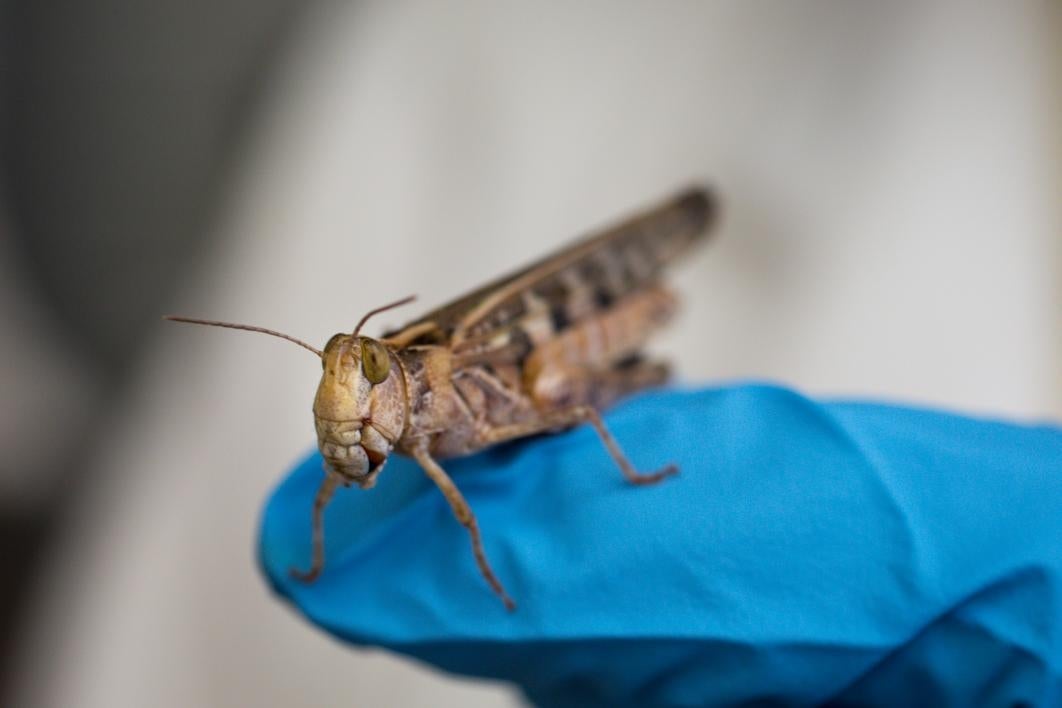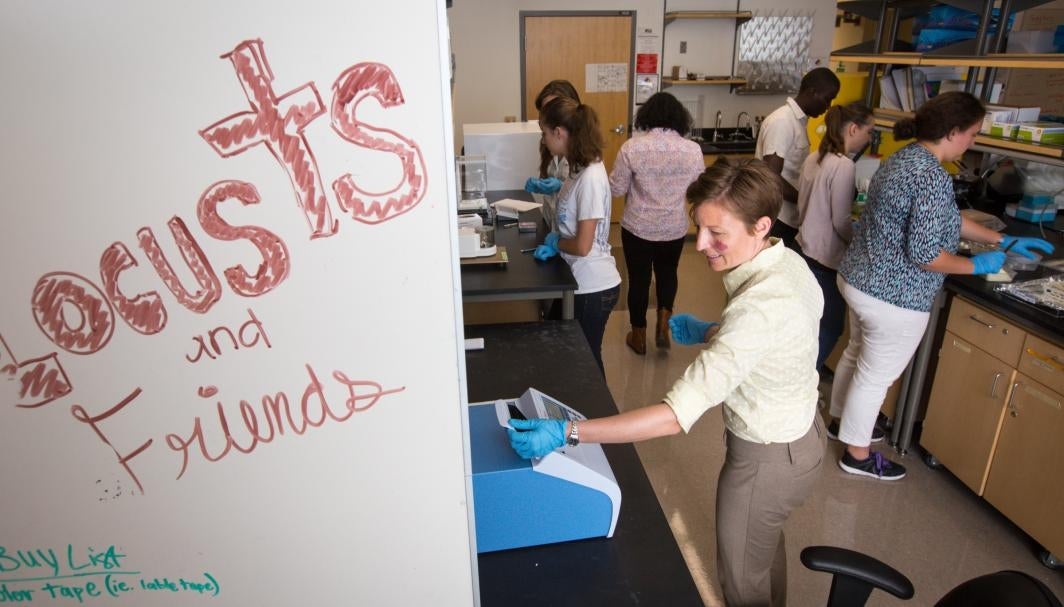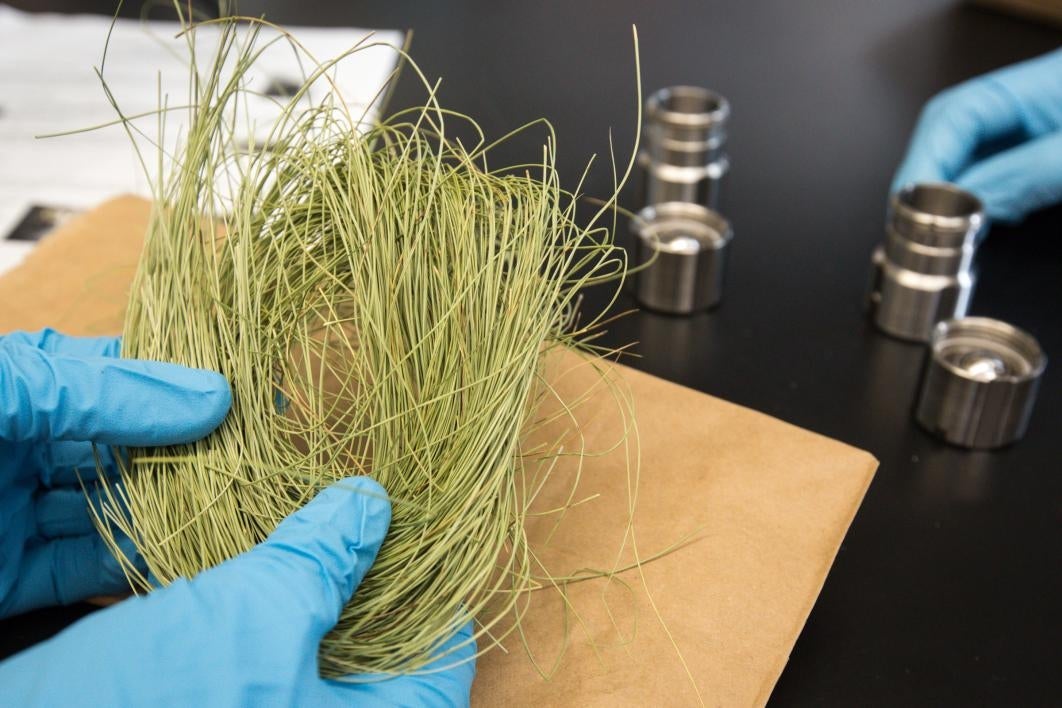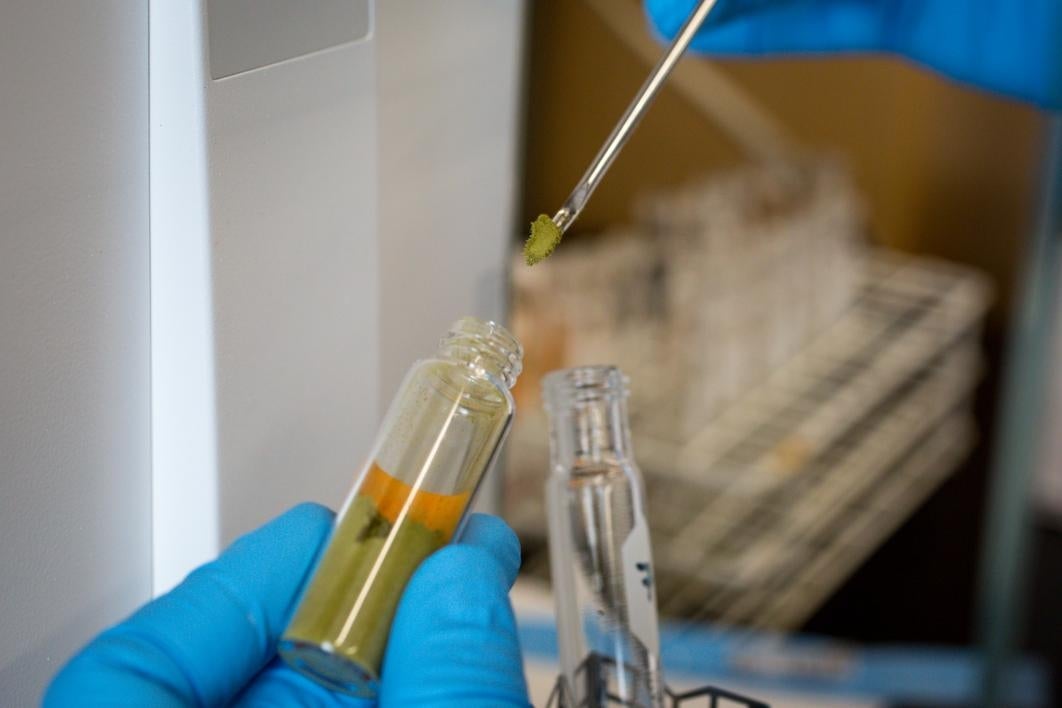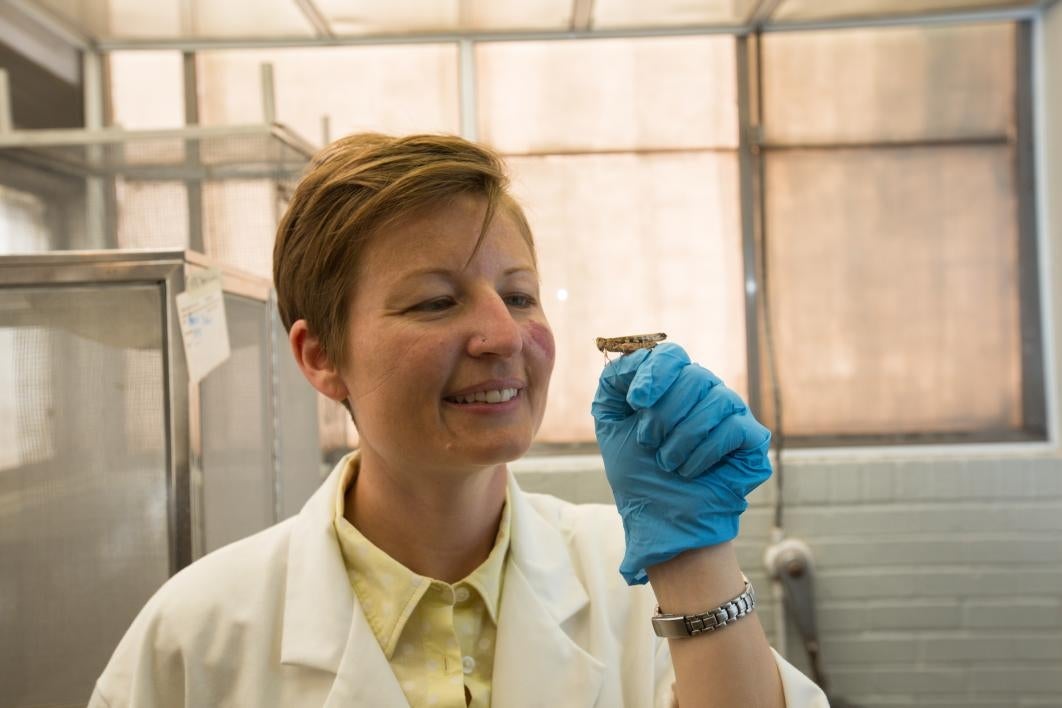Locusts have been around since, well, Biblical times and have wreaked havoc on Earth and humans’ food production.
But it’s only recently that scientists like Arizona State University’s Arianne Cease have begun connecting the dots of locust swarms to land-use patterns. Their findings are leading to new ways to combat an ancient problem — by bringing human behavior into the equation.
“We are working to address the age-old challenge of locusts and locust plagues, which are a problem around the world for food security,” said Cease, a senior sustainability scientist at ASU’s Julie Ann Wrigley Global Institute of Sustainability who was recently named a member of the 2015 Brilliant 10 by Popular Science magazine.
“We are working to understand what causes plagues so that we can address the problem in a new way, by incorporating local farmers and human communities into the equation,” she said.
The Brilliant 10 is annually conducted by Popular Science to identify the brightest young minds in science and engineering. Cease, an assistant professor in ASU’s School of Sustainability, is being cited for her investigations into what transforms individual locusts — which are harmless — into ravenous swarms that devastate crops, and her work identifying strategies to stop the insects from swarming.
“At Popular Science, we believe many of the world’s most challenging problems can be solved through brilliant science and engineering,” said executive editor Jennifer Bogo. “Our 10 honorees are at the bleeding edge of their fields — and are already well on their way to making the world a better, safer, smarter place.”
Studying locusts in their place
“We study the physiology and ecology of insects,” Cease said of her work. “That allows us to understand the mechanisms underlying the patterns that we see in nature.”
Understanding those mechanisms allows Cease and her collaborators to think about different strategies for farmers.
Cease’s international team consists of biologists, resource economists and other natural and social scientists. Together they are able to develop an integrated understanding of the ecological and socio-economic connections between locusts, crops and livelihoods. They also work with on-the-ground stakeholders to understand the management practices that must be adapted
Cease’s work stretches across three areas: Australia, China and West Africa, focusing on locusts living on similar landscapes, but in areas that have widely differing forms of government.
“I think what Arianne is doing is really novel and is illustrated by her ability to connect the basic science and really understand how the insects work and how they interact with the environment,” said Jon Harrison, a professor in ASU’s School of Life Sciences and Cease’s collaborator and mentor.
It’s not simply a case of creating a better pesticide or using a pure-science approach. The issue is a complex one combining human choices, animal biology and economics.
“Locusts exist in a very tightly coupled system with humans and, in order to find some sustainable solutions to locusts, we really had to take a systems approach to their study,” Cease said. “We had to bring the people and the economics and the culture and everything into the system to understand how to solve the puzzle.”
Cease became interested in locust swarms from her experience in the Peace Corps. She was working with farmers and women’s groups in Senegal, West Africa, to implement tree technology such as windbreaks and using trees as living fences.
“We would work with farmers who were interested in learning new techniques, such as grafting mango trees and sharing them with other farmers,” she recalled. “I was dutifully building a number of tree nurseries and getting ready to plant trees in the field when a huge plague of grasshoppers arrived at the village where I was living. They ate everything, anything that was green, and they even started to eat the bark off the trees.”
Cease said they tried everything to stop the grasshoppers but to no avail.
“It’s really challenging to control an outbreak once grasshoppers become really abundant,” she said. Having seen the devastation locusts could cause, “I wanted to understand the root cause of that — what made locusts have outbreaks.”
To swarm or not to swarm
For Cease each locust is biologically fascinating.
“They have a really cool plasticity where individuals with the same genotype can switch from being solitarious and wanting to be by themselves, to being gregarious and wanting to be in a group or swarm depending on their environment as juveniles,” she said.
It’s the latter that is dangerous to crops and humanity.
Cease said scientists have a strong understanding that population density is a primary trigger that leads locust swarms, “but we know very little about how other environmental factors might modulate that. One thing we are looking at is the effect of diet, and we’ve found that depending on what you feed the locusts, even if you rear them in high density, you can actually suppress development of the gregarious behavior.”
In her lab in Tempe, Cease studies nutritional factors that can have an effect on the locusts. Researchers grind up the grasses from their sites and dig deep into the nutritional value they provide to locusts through chemical analyses.
Through this work, Cease has found that some locust species prefer low-protein, high-carbohydrate diets, so they feast most on overgrazed grasslands. The locations in which Cease studies locusts share common environmental characteristics in that they are dry land systems where the local people depend on the land for growing livestock.
When the land is overworked, it becomes a prime target for locust swarms. Human choices, it appears, have a direct effect on locust risk.
“We’re studying the biological mechanisms underpinning locust outbreaks in China, Australia and Senegal, but then we are also working to understand the other half of the system that includes socioeconomic aspects of the land use,” she said. “The reason why it’s interesting to compare these three areas is because they have pretty distinct styles of governance.”
Generally, China engages in larger-scale social planning, Australia largely regulates grazing lands through private-property rights, and Senegal often has more locally devised systems.
Cease’s team is working with food-security and plant-protection agencies around the world that are considering these new results in their management strategies. These include the Direction de la Protection des Végétaux in Senegal, the Australian Plague Locust Commission, the Local Land Service and Department of Primary Industries in Australia and the Chinese Academies of Science and Social Science in China.
Management of locusts often means using pesticides to keep their numbers down. But pesticides are costly and can have unintended consequences for the ecosystems and human health.
“We’re not trying to figure out how to eradicate locusts because they’re an important part of the ecosystem,” she said. “But we are trying to show we can keep them at bay.”
One of the main goals of Cease’s lab is to understand the interactions between humans and locusts. It’s a whole-system approach, looking at cultural practices, government policies, economic considerations — all of which affect the health of the soil and local ecosystems, which has a direct effect on locust activity.
“By understanding all of these different components of the system, we can think about new approaches to sustainably manage locust plagues while maintaining farmer livelihood,” Cease said.
Learn more
- Video: Arianne Cease on finding sustainable solutions to locusts
- Ask a Biologist: On the lookout for locusts
- Podcast: Swarm science
More Environment and sustainability

Homes for songbirds: Protecting Lucy’s warblers in the urban desert
Each spring, tiny Lucy’s warblers, with their soft gray plumage and rusty crown, return to the Arizona desert, flitting through the mesquite branches in search of safe places to nest.But as urban…

Public education project brings new water recycling process to life
A new virtual reality project developed by an interdisciplinary team at Arizona State University has earned the 2025 WateReuse Award for Excellence in Outreach and Education. The national …

ASU team creates decision-making framework to improve conservation efficiency
Conserving the world’s ecosystems is a hard job — especially in times of climate change, large-scale landscape destruction and the sixth mass extinction. The job’s not made any easier by the fact…



